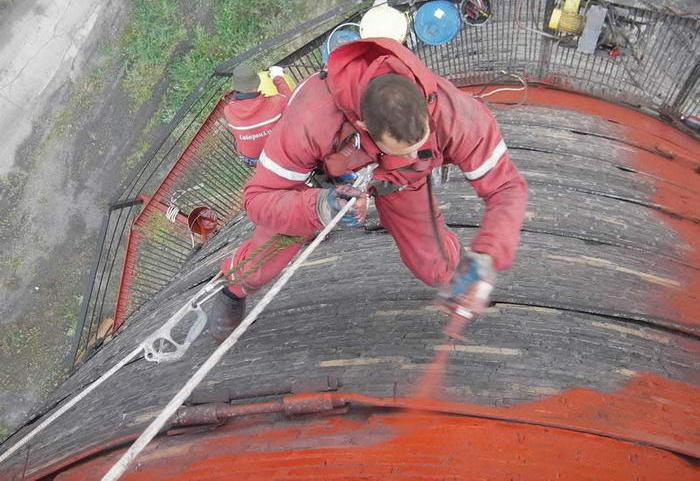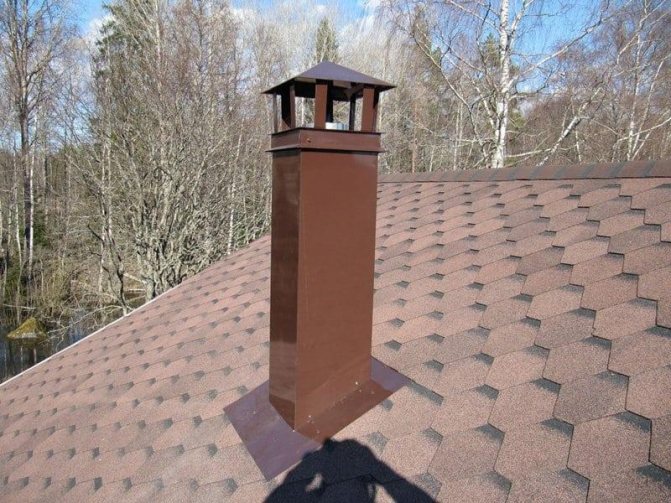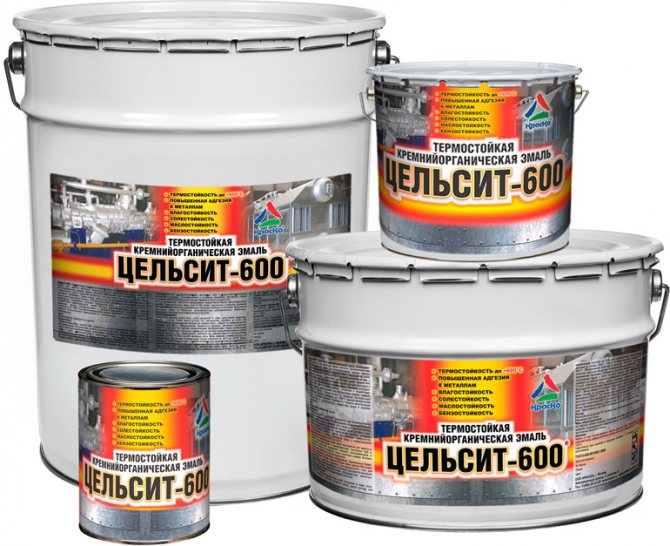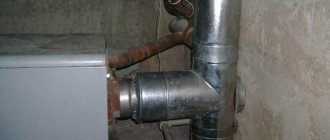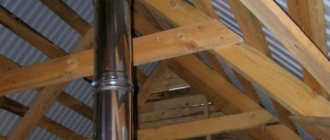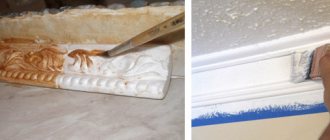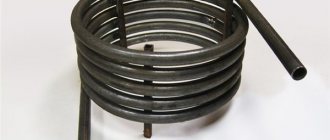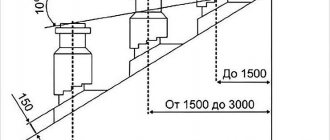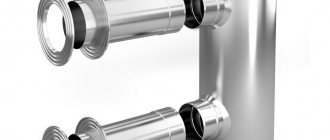Corrosion is the main enemy of metal. Metal pipes need anti-corrosion protection. Such protection is especially important for cold water pipes, because condensate will constantly collect on their surface. The easiest way to protect metal pipes from corrosion, and at the same time to give them an aesthetic appearance, by painting. With protective staining, the main factor of protection is not at all the qualitative characteristics of the paint itself, but the quality of its adhesion to the metal - i.e. adhesion. Unevenness of painting, bubbles should not be allowed, and corrosion centers on pipes should not be left under the paint. In such places, new paint will peel off very quickly, and corrosion will develop under a layer of paint that looks normal on the outside.
The procedure for painting metal pipes.
- The surface must be pre-cleaned, all rust and old paint must be mechanically removed from it. For this, sandpaper, metal brushes are used, special grinders are used for cleaning metal or cleaning nozzles for a drill or grinder.
- The next step is chemical removal of rust residues. For this, the pipes are treated with phosphoric acid, or with special rust removers based on it. As a result, a strong film covering the metal is formed at the reaction sites.
- Cleaned and treated with chemical rust removers, the surface is primed. Primers are used for metal, for example, one of the cheap and simple ones - GF-021.
- The surface is painted with a paint compatible with the previously applied primer. In this case, it is not at all necessary to strive to create as thick a layer of paint as possible, because the effect of this will be the opposite. A thick layer of paint peels off more easily.
Usually, primer and paint are purchased at the same time, and their compatibility and characteristics are determined.
On sale you can find a very large variety of paints. The cheapest are of the PF-115 type, but more resistant polyurethane, alkyd, epoxy paints can be used.
There is also the so-called "paint for rust", which is no longer cheap, which includes rust inhibitors, substances with high adhesion to metal (guntovka), and the actual enamel. But this product naturally cannot guarantee quality in difficult cases.
Source: stroy-block.com.ua
Mechanical cleaning of the surface from rust
The first step, of course, is to remove large pieces of rust by mechanically cleaning the surface. Typically, this is done using a metal brush for manual cleaning or a metal attachment on a sander or drill to speed up the process.
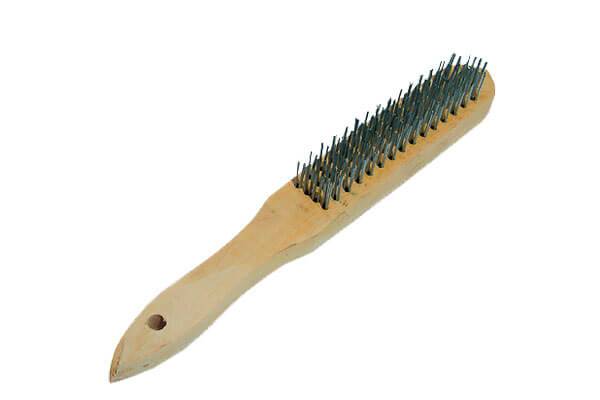
The stage of mechanical cleaning from rust, in contrast to the subsequent ones, is mandatory, albeit quite laborious. However, even if you finish the paint preparation process at this stage, your painted surface will already look much better and the paint will last much longer.
After cleaning the surface in this way, it is highly advisable to smooth it with a grinder in order to remove and even out all the irregularities and scratches on the metal. Of course, if you have to paint a very large surface, it will be faster and easier to use a sandblasting machine, but not everyone has access to such equipment, so we will not delve into this issue.
Degreasing, priming and painting the surface
After removing the main layer of rust using one of the above methods, for a good adhesion of the paint, the surface must be degreased. Any strong detergent is suitable for this.
The next and final stage in preparing the surface for painting is to coat it with a primer. This step should not be skipped if you want your surface to look smooth and evenly colored. Apply the primer according to the instructions mechanically or with a spray.
That's all, now you can paint. Apply paint to the surface using a brush, roller or spray gun. It is recommended to paint in two layers, so that there will definitely be no unpainted areas on the surface.
And if the metal has rusted so much that it makes no sense to paint it, it may still be worth replacing the part with a new one and getting rid of the old one. You can do this even by earning a little extra money. You can find out where to hand over scrap metal on this website. They will gladly accept your metal products and pay good money for it.
© OchProsto.com
Source: OchProsto.com
Types of paint for heating pipes
When deciding what paint to paint heating pipes with, you should pay attention to the following types of such compositions, which today are most popular among consumers:
- acrylic enamels
... The basis of such a paint is made up of organic solvents, which explains the not very pleasant smell during its drying. Nevertheless, such a sample will provide a perfectly smooth and glossy surface and will last a very long time; - alkyd enamels
... These compounds also emit an unpleasant odor, which can periodically appear in the future with an actively working heating system. However, such a paint will be very resistant to any mechanical damage and will not change its structure when exposed to high temperatures. Do not forget that on the modern market there is a wide selection of shades of such enamel, therefore, it will not be difficult to choose an option suitable for a particular interior, it will be enough just to study the photos of the samples provided by the manufacturer; - water-based paints
... Painting heating pipes with this composition is the most common option among consumers. This composition does not exude an unpleasant smell, in addition, such paint for hot heating pipes dries out very quickly.
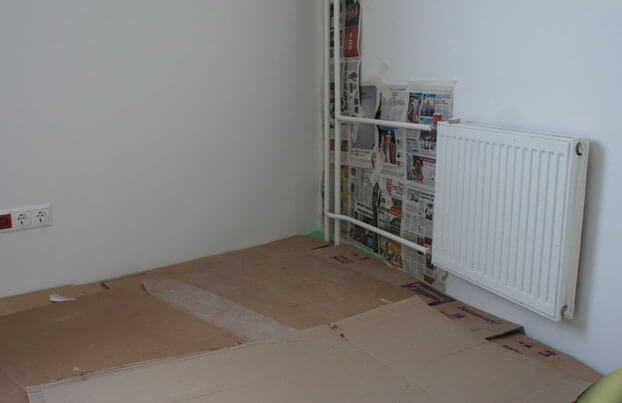

It is also impossible not to mention such an option as oil paint, which, however, is rarely used today for painting pipes.
Mechanical cleaning of the surface from rust
The first step, of course, is to remove large pieces of rust by mechanically cleaning the surface. Typically, this is done using a metal brush for manual cleaning or a metal attachment on a sander or drill to speed up the process.
The stage of mechanical cleaning from rust, in contrast to the subsequent ones, is mandatory, albeit quite laborious. However, even if you finish the paint preparation process at this stage, your painted surface will already look much better and the paint will last much longer.
After cleaning the surface in this way, it is highly advisable to smooth it with a grinder in order to remove and even out all the irregularities and scratches on the metal. Of course, if you have to paint a very large surface, it will be faster and easier to use a sandblasting machine, but not everyone has access to such equipment, so we will not delve into this issue.
Degreasing, priming and painting the surface
After removing the main layer of rust using one of the above methods, for a good adhesion of the paint, the surface must be degreased.Any strong detergent is suitable for this.
The next and final stage in preparing the surface for painting is to coat it with a primer. This step should not be skipped if you want your surface to look smooth and evenly colored. Apply the primer according to the instructions mechanically or with a spray.
That's all, now you can paint. Apply paint to the surface using a brush, roller or spray gun. It is recommended to paint in two layers, so that there will definitely be no unpainted areas on the surface.
And if the metal has rusted so much that it makes no sense to paint it, it may still be worth replacing the part with a new one and getting rid of the old one. You can do this even by earning a little extra money. You can find out where to hand over scrap metal on this website. They will gladly accept your metal products and pay good money for it.
© OchProsto.com
Source: OchProsto.com
This problem is known to many. Almost everyone has met at least once in their life with the need to cope with rust that corrodes metal. Most often these are rusty pipes, which periodically require renewal of the paint coating, including for a protective purpose - so that corrosion does not cause unique harm.
You can choose and buy a special waterproof paint designed for anti-corrosion protection through the Odessa price aggregator Vseceni.
After all, then it will be necessary to resolve the issue of replacing pipes, for example, water pipes. And this is always a much greater cost, both material and labor resources. So, you need to paint at the time. With rust, a special primer-enamel for rust will help you to cope with it, which combines the qualities of both primers and high-quality paint coatings.
Among the methods recommended by experienced painters, a simple but effective one deserves attention. A prerequisite for such work is thorough cleaning of the pipe surface. Corroded metal, the so-called scale, must be removed so that the adhesion of the paint to the living metal is maximized.
For this, a metal brush is suitable, which will just remove already destroyed and dilapidated metal particles that prevent the penetration of paint. After the brush, you need to pick up sandpaper, first with a coarse grain, and then with a finer one, and walk along the pipe section, finally processing it, as they say, to a mirror finish.
You should not save your efforts on preparatory work, because the final result depends on how well they are performed.
At the hardware store, you need to select a special paint that is designed to work on rusty metal. It is called that. On the bank it says, "Straight to the rust." This is a so-called primer that contains a rust reducing agent. The applied primer must dry for at least a day.
Then paint can be applied. When choosing it, carefully look at the labeling of the can: if the first digit in the digital index is 1, this means that the paint is intended for painting pipes, for example, located in cold rooms or outside. Number 2 indicates that the paint should be used for interior work. Such paint is safely applied directly to the rust, it eats into it and does not exfoliate, corrosion in this area stops.
The importance of corrosion protection is difficult to overestimate, statistics show that about 5 percent of the national income is the annual damage caused by rust. Most often, especially in industrial conditions, there is no way to stop the work process in order to remove rust, which means that you need to use the techniques of applying protective coatings directly to it.
Modern paints and varnishes, unfortunately, do not guarantee complete protection against rust, moisture penetrates under them and continues its dirty work. This means that there is only one way out - to constantly keep under control the problem areas of pipes or other metal surfaces and to refresh their protection in time with the help of primer enamels for rust and other means that the industry has at its disposal today.
Source: bcoreanda.com
Heating pipe paint
In this section, we will tell you what a good galvanized paint should be, which not only gives an attractive appearance and fits into the interior of the room, but also protects it from corrosion and rust.
In order for the pipeline in which hot and cold water passes to have a positive end result, the paint must be:
- With high temperature resistance more than 110 degrees;
- Stable, not rubbed off;
- Non toxic;
- Resistant to aggressive environments.
Manufacturers offer a range of manufactured products, which amazes in quantity when choosing:
- Acrylic enamel. They are produced based on an organic solvent, therefore, painting galvanized metal with such paint does not have a specific smell after drying. As for the final result, everyone is satisfied - the presence of a glossy shine and a service life of up to 10 years.
- Alkyd enamel. Such products in operation are accompanied by an unpleasant odor, which is felt very strongly after drying and turning on the heating. But this pipe painting does not wear off and can withstand high temperatures. The manufacturer offers a wide range of colors to suit every consumer.
- Water-dispersive. This paint is suitable for painting galvanized iron. The products are widespread and in great demand, since when working, unpleasant odors are not felt, and the products dry out instantly.
If you decide to paint your heating pipes, we do not recommend that you do it with oil-based paint. At a high temperature, such products will immediately change color, become dull, moreover, they do not last long on the plumbing system.
Manufacturers of paint for galvanized profile pipes
Paint for galvanized pipes is presented in stores from different manufacturers - domestic and foreign, which offer a huge number of types and colors. As for the pricing policy, it depends on the number of liters in the can, manufacturer and quality. Among the assortment of goods, preference is given to German paints, Dutch, Swiss and others.
Dutch paints are durable, after drying you will see a glossy surface with a smooth texture and you will be satisfied with the result. German products are of high quality, resistant and do not change color at high temperatures. If we talk about Swiss, then this paint is used as a primer and when painting. It is worth noting the ratio of not high prices and excellent quality.
